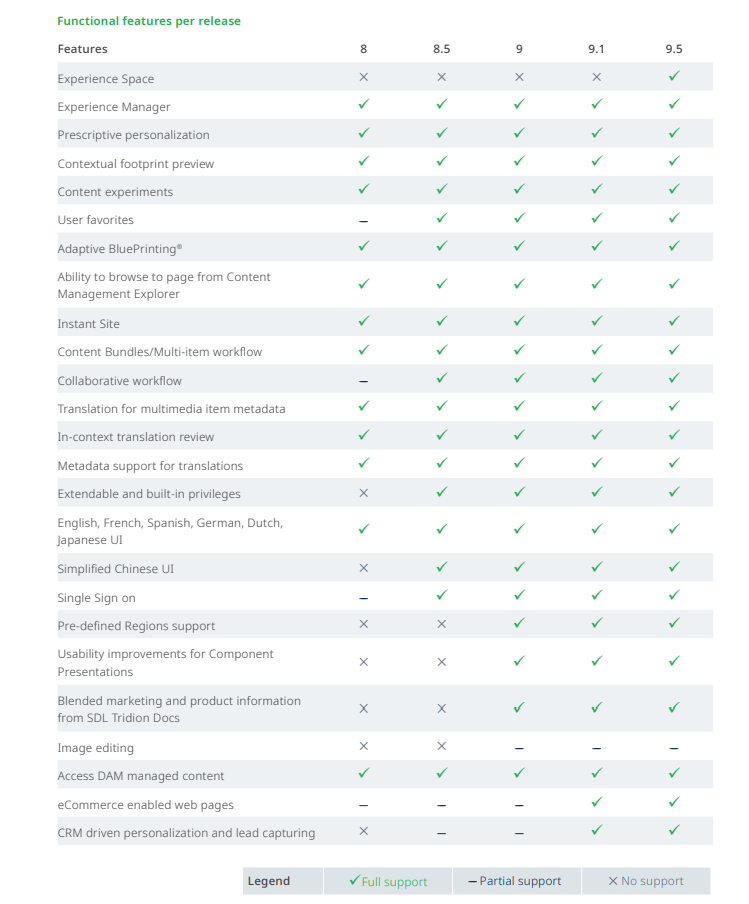Five architectural changes to be aware of in Tridion Sites 9.6
- Semantic AI
- Core Services .REST
- UX Improvements
- Entitlements
- Platform Changes








What’s New
Five architectural changes to be aware of in Tridion Sites 9.6








SDL Tridion Sites 9.5 marks a major step towards a fully rejuvenated user experience for SDL Tridion practitioners, while also including improvements in Search and Content Delivery.
Experience Space – our new and improved user interface
How the Dynamic Experience Delivery component has been improved with better search and easier headless publishing
How the functional and technical features of each release compare in simple summary tables
Please refer to the community link for the announcement
What’s new in SDL Tridion Sites 9.5
Refer to my blogs Link for more details and you can download the datasheet from our website refer to link
Semantic Content Models
.
Semantic Content Models’ allows you to define a mapping between the Tridion content fields and how they are queried through the GraphQL API.
This abstraction mechanism removes dependencies between the two, so that future changes to your content model don’t directly impact your front-end applications. As a result, your front-end developers can build engaging digital experiences more easily, without needing to know the inner workings of SDL Tridion
type Post {
id: String!
title: String!
publishedAt : DateTime!
likes: Int! @default(value: 0)
blog: Blog @relation(name:"Posts")
}Allow customers to query filter using familiar concepts ( for example : Article , News,Post,Blog etc.)
type Blog {
id: String!
name: String!
description:String
posts: [Post!]! @relation(name: "Posts")
}Semantic Content Models in DXD
Semantic content models exposed natively in the content API
page(namespaceId: 1, publicationId:2 , pageId:76 {
content {
... on UntypedContent {
data {
}
}
}
Refined GraphQL API to support custom schema types within existing root queries ( Items,component,page
page(namespaceId: 1, publicationId:2 , pageId:76 {
content {
... on Post {
id
title
}
}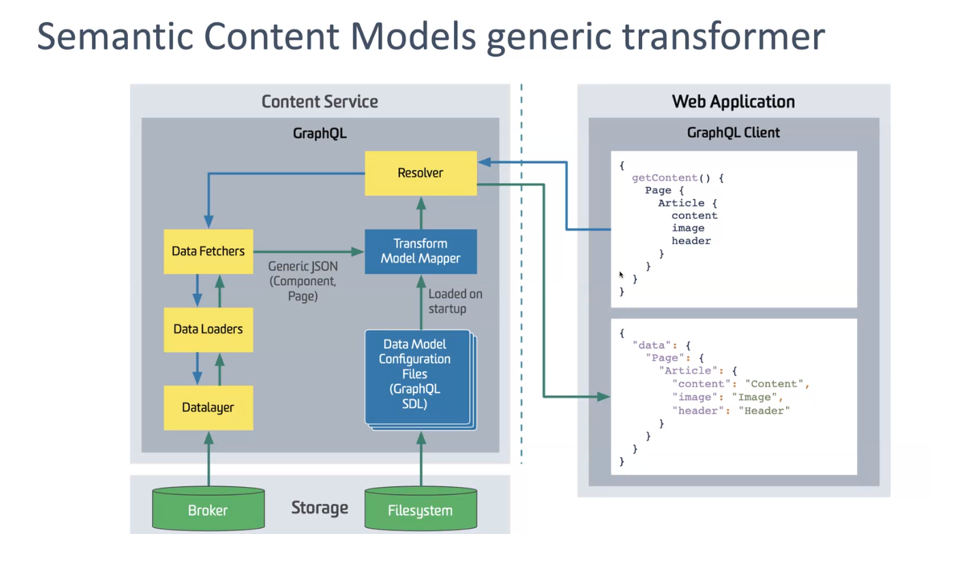
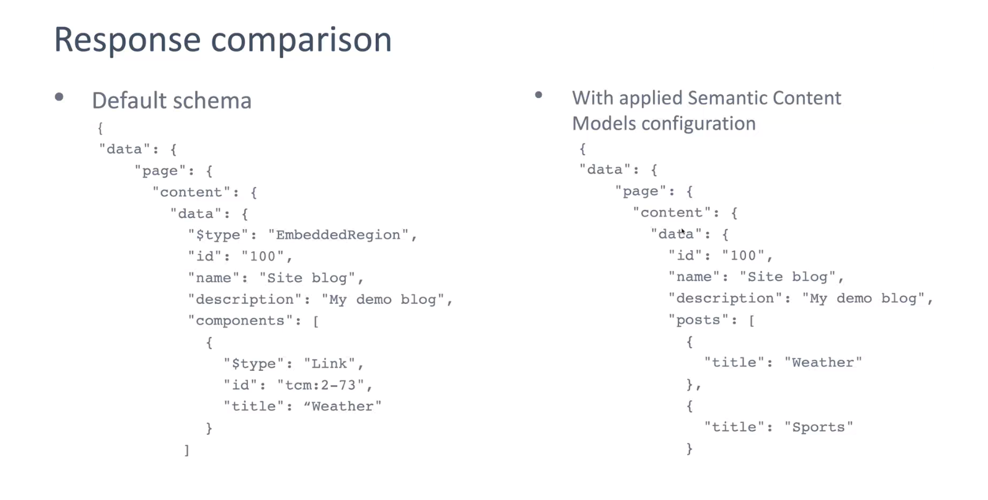

Why SDL Tridion Sites Search
.
SDL Tridion Sites now ships with out-of-the-box support for Elasticsearch-based search for published content, helping you find published content within pages, components and binaries. You can also search for content from SDL Tridion Docs, providing federated
search capabilities across both unstructured and structured content. People searching on your website or other digital channels can now find all the relevant information quickly and easily, without the need to perform multiple searches across your marketing content or
in-depth product and service information.
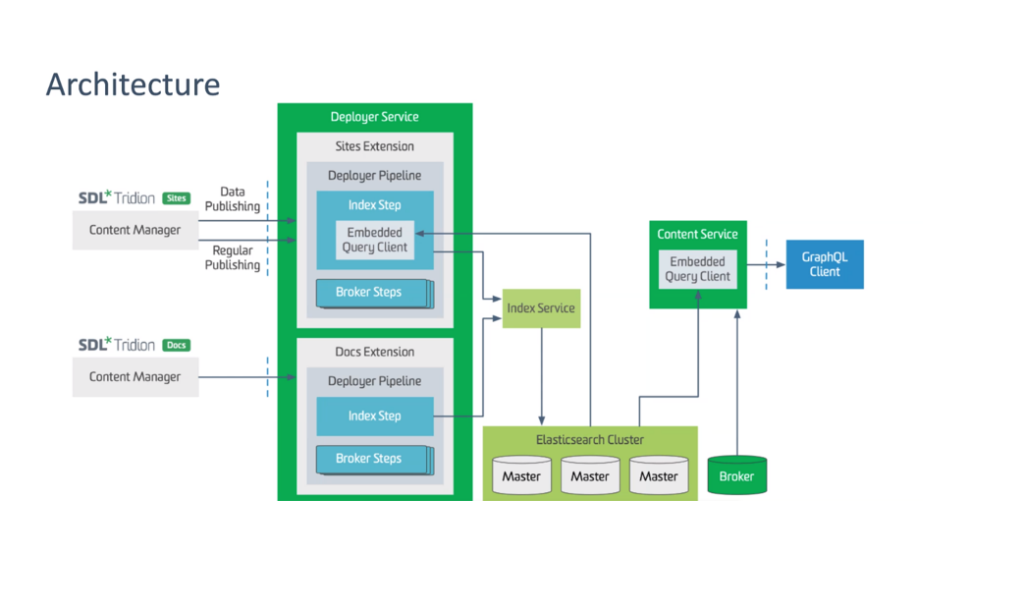
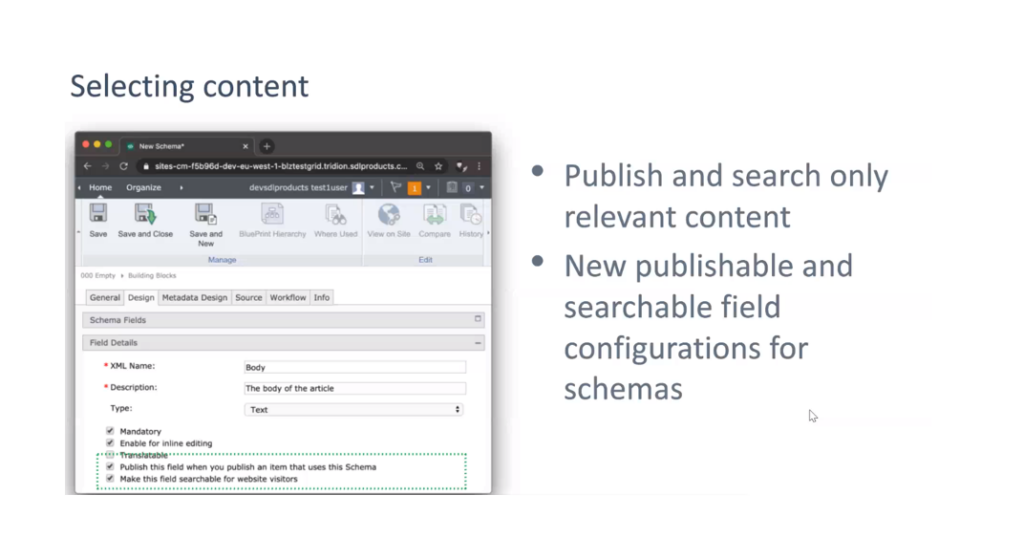
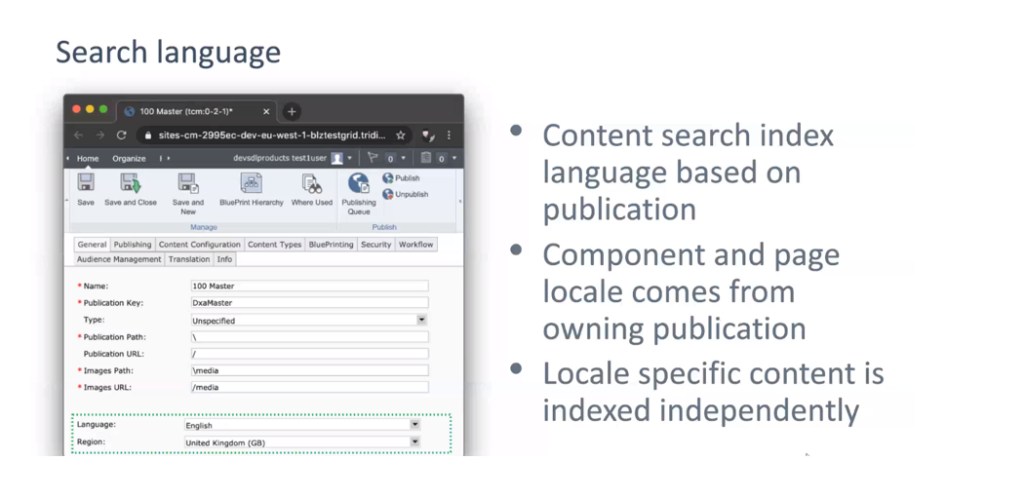
# Content Service
applications.properties
# broker: default
profile to enable broker results
# search: enables search
spring.profiles.active=${springprofilesactive:broker,search)GraphQL Search
searchById(indexName,identifier):
[Result]
searchByField(after,first,indexName,field,strict,value,resultFilter,sortBy):
SearchConnection
searchByCriteria(after,first,indexName,field,strict,value,resultFilter,sortBy):
SearchConnection
searchByRawQuery(after,first,indexName,field,strict,value,resultFilter,sortBy):
SearchConnection

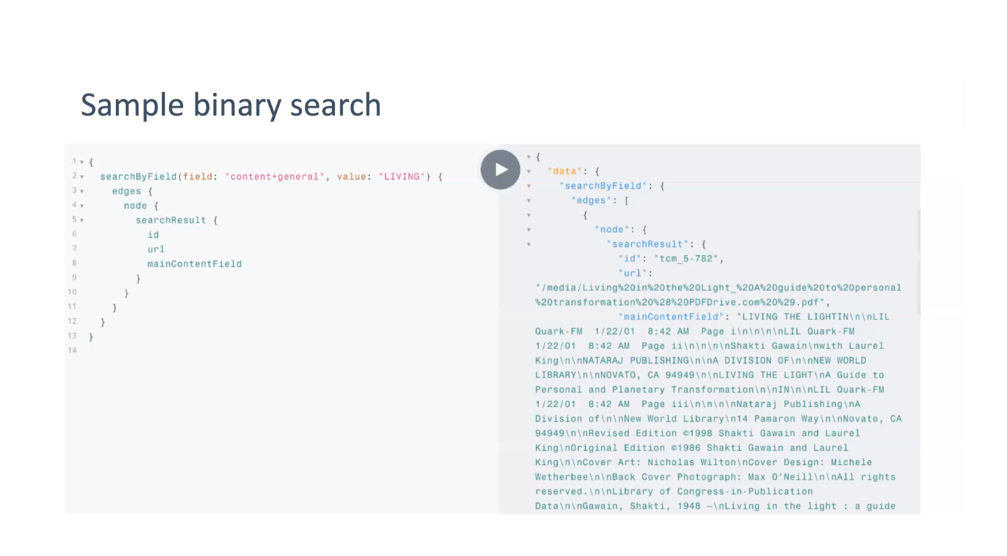
SDL Tridion Docs + Tridion Sites
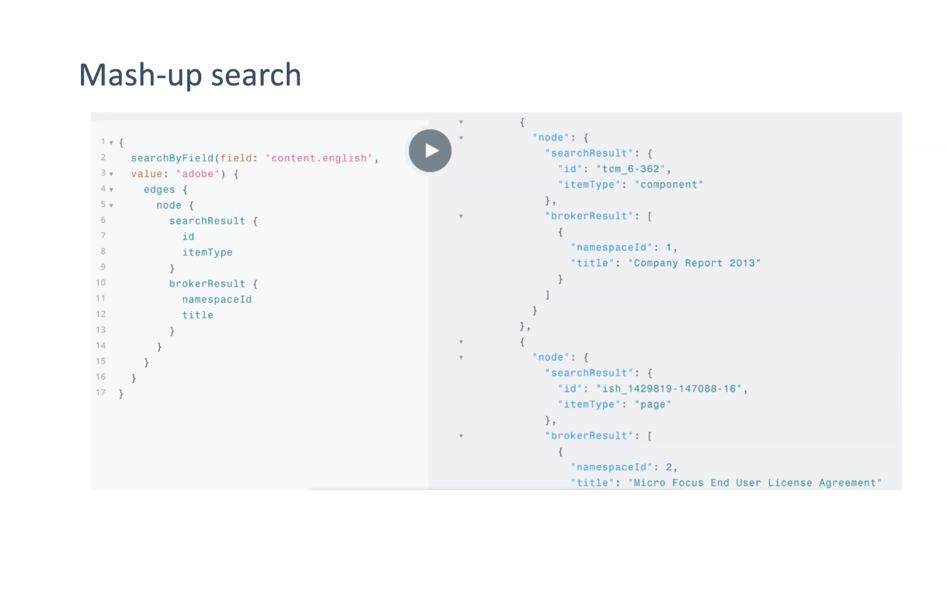

Publishing Model
New data publishing capabilities allow you to define – at the content schema level – which fields need to be published to DXD, as well as which ones are searchable. This highly granular control over what data is transferred to DXD adds extra security to your
environments.
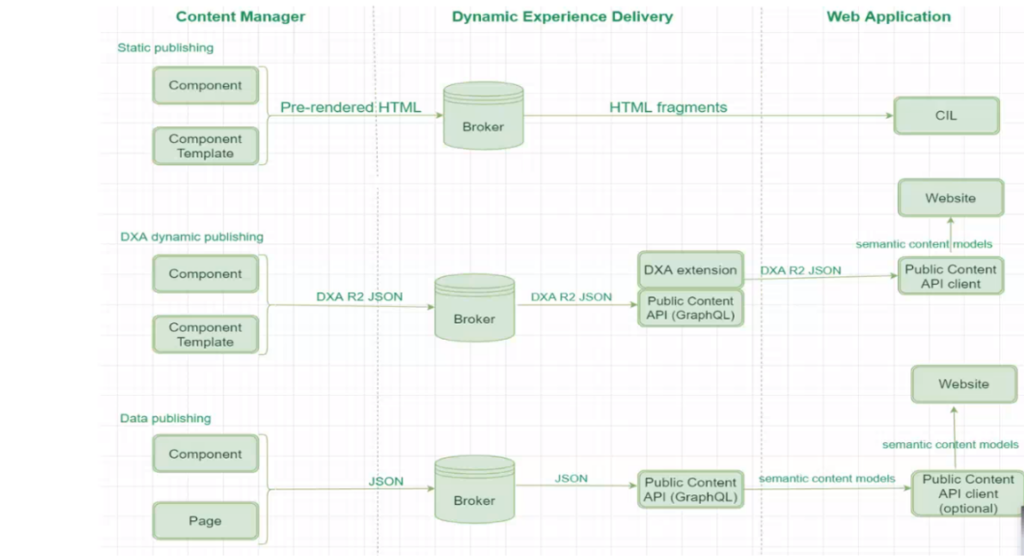
Data Publishing
Publish content as structured date ( JSON) next to the existing rendered content
Standard data model – no need in data modifications or custom tem
Benefits of Data Publishing
New field properties for the Schema
Applicable for semantic content models
Each Schema field will have checkbox to specify
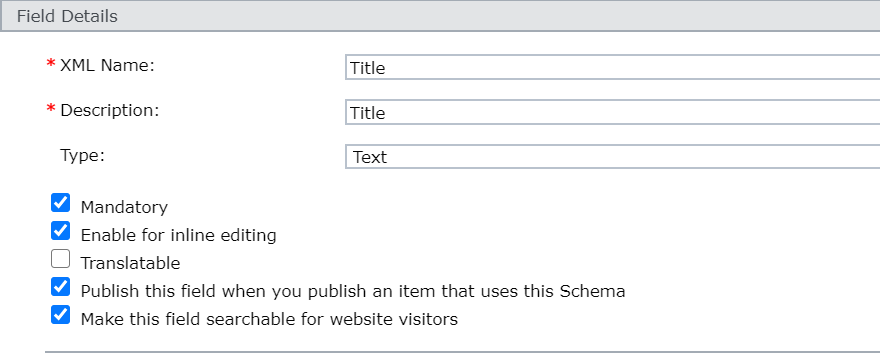
General Settings for Schema
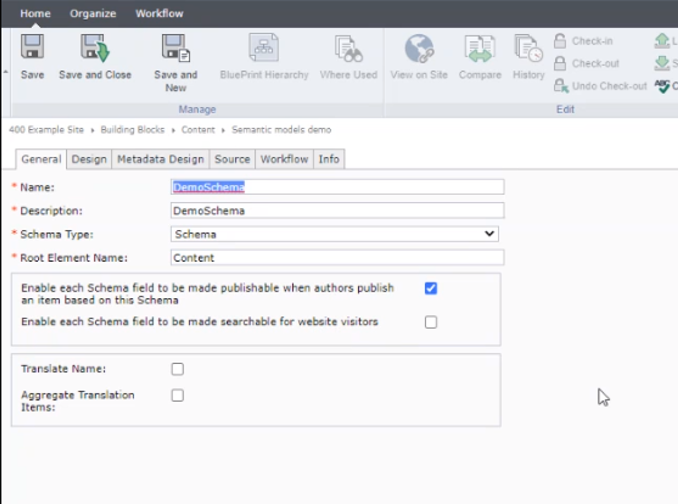
ECL data publishing
Template-less publishing: future is near
A new user experience
SDL Tridion Sites 9.5 focuses on delivering major improvements for employees who work in Content Manager Explorer (CME). We have gathered input from a large number of customer interviews, user experience (UX) sessions, and through an extensive pilot period – combined with ideas and enhancements for usability improvements that we collected previously through Support, SDL Ideas, the SDL Community and other channels.
Experience Space – an exceptional new way of working
The name of the new user interface is Experience Space. It’s a workspace that helps you build great experiences faster
and easier, with less clicks and better defaults. It also speeds up onboarding of new employees and reduces
training needs.
Experience Space broadly offers the same capabilities of the current CME – referred to as the Classic UI from now
onwards – but with some important features added, such as an improved BluePrinting® viewer and an in-context page
preview with clear actions and panels.
Besides offering easier content management, it also ships with a brand new Rich Text Editor that improves accessibility
checks, copy/paste and table editing, and support for certain touch-enabled devices.
The new user interface supports your existing page and content models to facilitate a smooth transition. SDL Tridion
Sites 9.5 ships with both the Classic UI and Experience Space so they can be used in parallel.
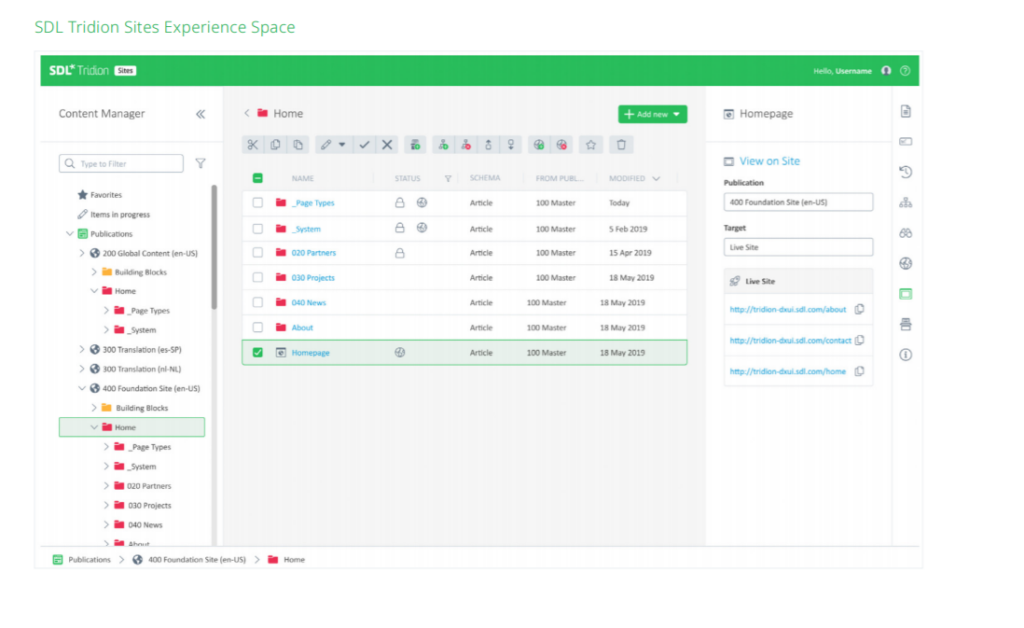
Dynamic Experience Delivery (DXD)
Dynamic Experience Delivery (DXD) is the content delivery component of SDL Tridion. It has been improved in two key areas – querying content through the GraphQL API and
Elasticsearch-based search.
Headless Content Publishing
To make headless content publishing even easier, SDL Tridion Sites 9.5 redefines the way content is published from your content manager to your content delivery (DXD) environments – as well as how it can be queried from there.
New data publishing capabilities allow you to define – at the content schema level – which fields need to be published to DXD, as well as which ones are searchable. This highly granular control over what data is transferred to DXD adds extra security to your
environments.
Content is published to DXD in JSON format for easy headless content consumption. The new JSON publishing (depicted in green below) runs in parallel with your existing template/rendering mechanism, to ensure backward compatibility.
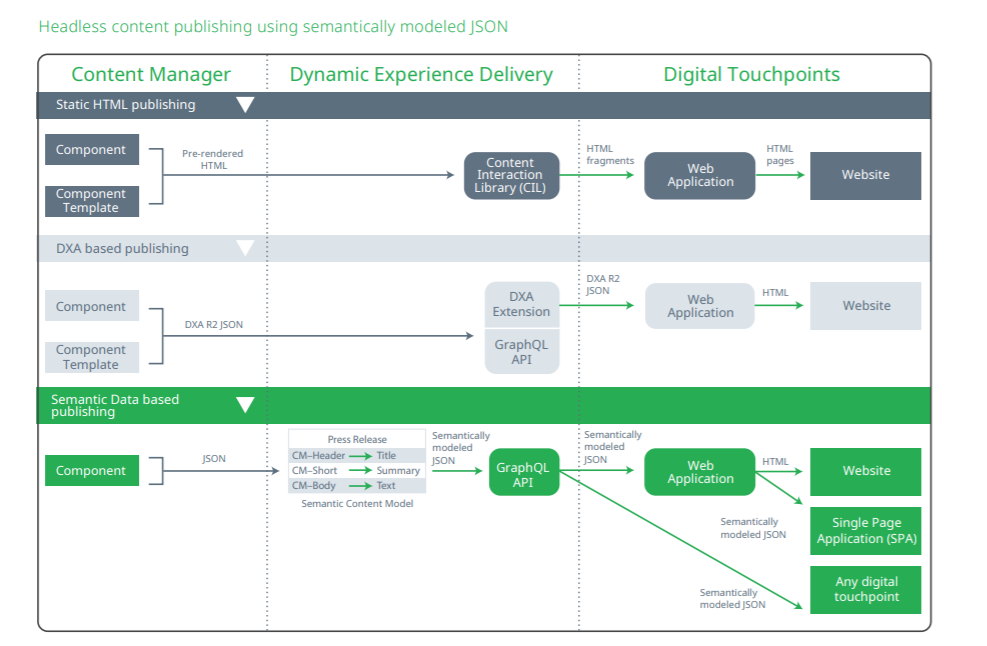
Once JSON content has been published to DXD, a new feature called ‘Semantic Content Models’ allows you to define a mapping between the Tridion content fields and how they are queried through the GraphQL API. This abstraction mechanism removes dependencies
between the two, so that future changes to your content model don’t directly impact your front-end applications. As a result, your front-end developers can build engaging digital experiences more easily, without needing to know the inner workings of SDL Tridion.
Search
SDL Tridion Sites now ships with out-of-the-box support for Elasticsearch-based search for published content, helping you find published content within pages, components and binaries. You can also search for content from SDL Tridion Docs, providing federated
search capabilities across both unstructured and structured content. People searching on your website or other digital channels can now find all the relevant information quickly and easily, without the need to perform multiple searches across your marketing content or
in-depth product and service information.
Since SDL Tridion Experience Optimization uses the same technology, you can also personalize the customer experience across various content types, all using the same technology and infrastructure
footprint.
Access Management
A new Access Management UI allows you to configure external identity providers such as Auth0, PingIdentity and Microsoft Azure AD – supporting protocols including SAML 2.0, OpenID Connect, Windows Authentication and LDAP. SDL Tridion also keeps an audit
trail of changes made to identity provider settings and user profiles, so you can always see who has changed what and when.

Summary of features launched per release
